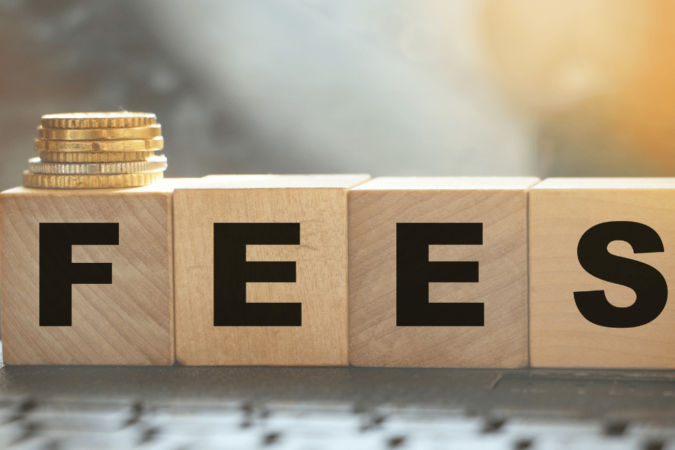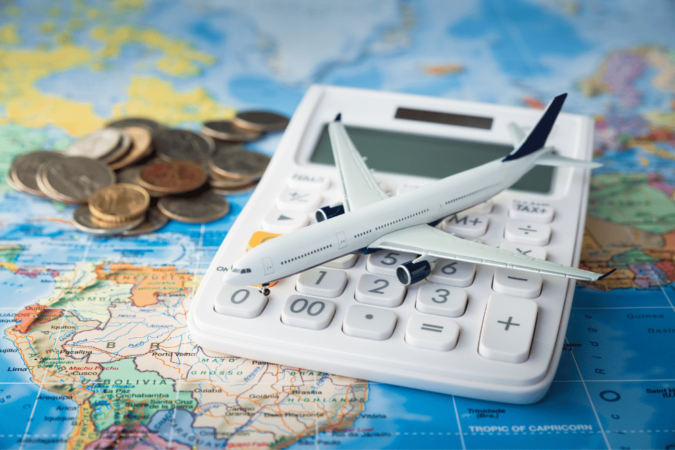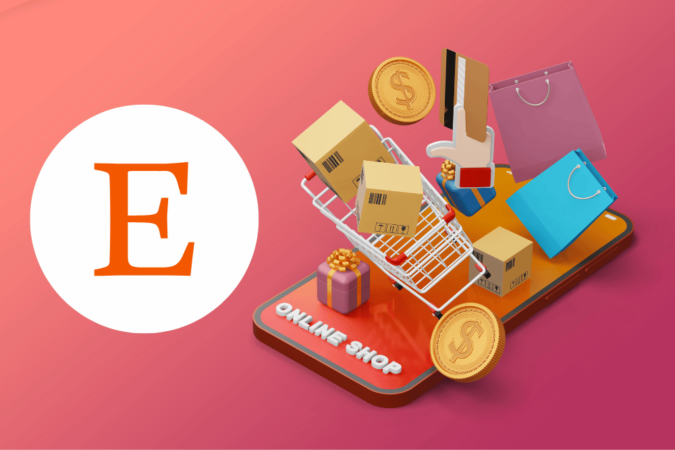
What Are the Costs for Etsy Sellers?: Seller Guide 2023

Are you looking to start selling on Etsy but aren’t sure how much it costs to sell on Etsy? That’s what we’re here to answer in this blog post! We’ll examine all the costs of being an Etsy seller—including listing fees, payment processing fees, and customizable business expenses. Whether you want to get started as a hobbyist or a full-time entrepreneur, this guide has everything you need to know so that you can make informed decisions about joining the Etsy marketplace. So get ready to launch your store by learning how much it costs to sell on Etsy in 2023!
Etsy Payments: What Are The Costs For Etsy Sellers?
Setting up an online store can be challenging. From creating a website, uploading products, and marketing your business, many steps are involved in getting started. One of the most important steps is setting up a payment system that allows customers to purchase items from your store easily. For Etsy sellers, one of the best payment systems is Etsy Payments. Let’s look at what it is and the costs for Etsy sellers.
What are Etsy Payments? What Are The Costs For Etsy Sellers
Etsy Payments is an integrated payment system created by Etsy specifically for its sellers. It allows buyers to pay for items with their credit card or through PayPal without ever leaving the Etsy website or app. This makes checkout easier and faster for both buyers and sellers and more secure since all payments are processed through Etsy’s secure servers.
Setting Up Your Account
The first step in setting up your account with Etsy Payments is linking it to your bank account so that you can receive payments from customers. Next, you must provide basic information such as your name, address, phone number, and Social Security Number (for U.S.-based accounts). Once you have provided this information, you can accept payments via Etsy Payments!
Fees & Restrictions
What are the costs for Etsy sellers? As with any payment processing service, specific fees are associated with using Etsy Payments. There is a 3% + $0.25 fee for each successful transaction, additional fees for international transactions, and currency conversion fees if applicable. Additionally, some restrictions exist on which countries can use the service. Only buyers from the US and 19 other countries can use it. Etsy Payments is an excellent option for any seller looking for an easy way to accept customer payments on the popular e-commerce platform. With its low transaction fees and integrated checkout process, it’s no wonder why so many sellers rely on this service when setting up their online stores! Setting up an account is easy.
All you need to do is provide basic information about yourself and link it to your bank account. Then, you’ll be ready to start accepting payments immediately! With no setup costs or monthly fees, it’s worth trying Etsy Payments if you’re creating an online business on Etsy!
The Different Types Of Etsy Fees For Sellers – Costs for Etsy Sellers

Are you considering starting an Etsy shop to sell your handmade products? If so, it’s essential to familiarize yourself with the different fees of being a seller on this popular e-commerce platform. Let’s break down each type of fee and how they can affect your bottom line.
Transaction Fee
What are the costs for Etsy sellers? For Etsy sellers, Etsy fees can be necessary when deciding which e-commerce platform to use. The most common fee is the Etsy transaction fee which is taken from each completed sale. This fee represents 6.5% of the total sale price and is charged to cover Etsy’s operational costs associated with the transactions. In addition to this 6.5% transaction fee, Etsy charges insurance payment fees and a shipping transaction fee depending on how buyers pay for their items. Knowing these Etsy transaction fees and understanding their implications for any individual business are essential to ensure profitability in the long run.
Listing Fee
On Etsy, sellers incur listing fees of $0.25 for every item listed. This initial fee, the Etsy listing fee, curates a quality experience for buyers and sellers alike. However, a private listing is not subject to the initial listing fee due to its opt-in nature. Additionally, extra fees can be incurred with each listing depending on the item’s size and listing price. Therefore sellers need to factor these initial fees into their budgeting process when deciding how much they should charge for a product.
Payment Processing Fee
Etsy payment processing fees are one of the significant fees that sellers must consider when setting listing prices on Etsy. They collect this Etsy payment processing fee on all orders. It amounts to 3% + 25 cents per transaction. It includes all credit or debit card transactions and e-checks processed through Etsy payments. Etsy payment fees may be higher for orders outside the US because of foreign transaction fees from certain international banks. Therefore, sellers should consider an Etsy payment fee when pricing products so that sufficient funds are available for the product cost and other expenses associated with selling online.
In-Person Selling Fee
For those looking to sell in person besides selling on Etsy, in-person selling fees are essential to consider about all of the other Etsy seller fees. This fee is calculated based on the quantity and price of the item sold in a physical store or market and is capped at USD 400 in revenue per listing. In-person selling fees apply in addition to regular shop transaction fees and not in place of them. Such a fee only applies when an in-person purchase link is generated for an item sold online to be purchased in person.
Advertising Fee
Advertising your products on Etsy is a great way to increase your visibility and earn more sales. To maximize exposure, Etsy offers sellers the opportunity to use offsite ads or Etsy ad credits to boost their product listings. The Etsy ads fees vary depending on factors such as the length of the campaign, budgets, etc. Offsite ads are a bit more expensive than Etsy ad credits, but they have the potential to reach a much larger audience. Ultimately, deciding which type of advertising fee to commit to should be carefully considered and calculated to best suit the seller’s needs and goals.
Monthly Subscription Fee
The e-commerce platform Etsy offers several fees for sellers using their services, including a monthly subscription fee or an Etsy Plus subscription fee. This is an excellent option for entrepreneurs looking to simplify their e-commerce needs. In addition, it provides access to Etsy Plus, which comes with an array of added benefits, such as discounts on shipping and customizable shop pages. With this subscription fee, new and experienced Etsy sellers can use powerful tools while avoiding common pitfalls associated with other e-commerce platforms. The monthly subscription fee on Etsy is designed to help create a thriving e-commerce business without high costs or too much effort.
Regulatory Operating Fee
Selling on Etsy requires understanding the different types of fees involved. One of those Etsy fees is the Regulatory Operating Fee, which first appeared in 2020. This fee is applied per item sold and helps Etsy to cover compliance costs related to regulatory requirements, like those for privacy, consumer protection, or e-commerce services. Any seller new to Etsy needs to be aware of this cost associated with selling their goods, as it can affect their overall profits. Working out the actual price of selling your goods on Etsy will ensure you decide to join the platform.
Pattern Fee
For Etsy sellers, one of the most important things to keep track of is Etsy fees. The Etsy store allows entrepreneurs to create their e-commerce presence and make income from their own business but requires Etsy fees to be paid as a portion of the overall sales price. One of the Etsy fees that a seller needs to be aware of is the Etsy Pattern Fee, which applies if you are using Etsy’s Pattern site. This fee is based on your plan category (Basic, Professional, or Advanced) and varies depending on your chosen price point. Understanding how fees work is critical to maximizing Etsy sales and ensuring your bills are properly paid when running an Etsy store.
Currency Conversion Fee
Etsy sellers should know that they may be subject to the currency conversion fee when the foreign currency is converted into the designated payment account currency. This fee applies if a seller’s payment receives currency that differs from their designated payment account currency. Etsy also estimates the exchange rate and final conversion fee amount as part of your checkout process to ensure you understand the fees regarding duplicate currency transactions. All fees should be considered before deciding to open an Etsy shop, as Etsy fees can be very beneficial in helping drive sales and visibility for Etsy sellers.
Getting Started with an Etsy Shop – Costs for Etsy Sellers

Esty is a popular online marketplace for handmade and vintage products. Creating an Etsy shop for entrepreneurs looking to start their businesses can be a great way to get your products out there. You can make a name for yourself. But getting started can be intimidating! First, you must know where to create an Etsy shop and get your business.
Step 1: Create Your Account
The first step is to sign up for an Etsy account. Next, enter basic information such as your name and address and choose a username. Once that’s all set up, you’ll have access to the dashboard, which allows you to manage orders and product listings.
Step 2: Set Up Your Shop
Once you have a username and password, it’s time to set up your shop. This includes selecting the type of shop (e.g., handmade or vintage), setting up payment methods, choosing a currency, and adding a profile picture for your store. You’ll also want to write a description of your store and add tags so customers can easily find your products when they search on Etsy.
Step 3: Create Listings
Now it’s time to start listing the items in your shop! Start by taking high-quality photos of each item to help potential customers understand what they’re buying. Then enter product details such as size, material, color, etc., along with descriptions of each item that are clear and concise.
- Price each item according to demand and include shipping costs if applicable (Etsy allows you to set different shipping rates based on country). Once complete, click “publish,” and your product will live in the Etsy marketplace!
- Starting an Etsy shop is easy once you understand the steps in setting one up. The first step is creating an account on Etsy. From there, it’s all about customizing the look of your shop. Next, add product listings with detailed descriptions and prices.
- Finally, promote it through social media channels like Instagram or Facebook Groups for maximum reach. With some dedication and hard work—and maybe even some help from Metric Marketing.
You can use this unique platform to make money doing something you love!
The Benefits of Selling on Etsy – Costs for Etsy Sellers
1. Etsy is easy to use:
Whether you’re just starting as a seller or have been selling online for years, Etsy makes creating and maintaining your shop easy. With simple tools that make listing new items quick and straightforward, it’s no wonder many people are turning to Etsy for their online selling needs.
2. Etsy has a built-in customer base:
You’re not starting from scratch when you set up a shop on Etsy. With 28 million active buyers and 2.1 million sellers, plenty of people want to buy items or shop on the platform. This means you have a good chance of reaching potential buyers when you list an item.
3. Etsy offers excellent customer support:
The Etsy team is always ready to assist if you have a question or need help with something related to your shop. With helpful tutorials, guides, and dedicated customer service agents, you can rest assured that whatever issue you have can be solved quickly.
4. Etsy offers a variety of tools to help you promote your shop:
If you want to increase the visibility of your products, Etsy provides several tools that can help you do so. These include targeted ads, promotional campaigns, and even market research tools to give insights into how customers view your items.
5. Etsy provides a secure payment system:
As a seller on Etsy, you don’t have to worry about setting up your payment processing system. Instead, encryption technology handles all payments securely through the platform to protect buyers and sellers. This makes it much easier (and safer) to sell items online.
6. Etsy has a strong community of sellers:
With millions of people buying and selling on the platform, there is an incredibly active and supportive community of sellers. Whether you’re looking for advice, feedback from other sellers, or someone to bounce ideas off, you can find it on Etsy. This makes it much easier to succeed as an Etsy seller.
7. Etsy is affordable:
Finally, one of the best things about selling on Etsy is that it’s very affordable. There are no costly setup fees or monthly subscription charges. So you can start selling items immediately without worrying about overhead costs. In addition, listing fees are meager and only charged when you make a sale. This makes Etsy an ideal choice for anyone looking to start online selling.
Overall, there are numerous benefits of selling on Etsy. It’s no wonder so many people are taking advantage of this platform. With its easy-to-use interface, built-in customer base, helpful tools, and low costs, Etsy is an ideal choice for anyone looking to start an online business. So what are you waiting for? Start selling on Etsy today and watch your business grow!
How to Calculate Etsy Shipping Costs? – Costs for Etsy Sellers

If you’re an Etsy seller, you know how important it is to get shipping costs right. Unfortunately, running a successful shop is one of the most complicated parts. It can be challenging to know where to start.
Fortunately, we’re here to make things easier for you. Let us walk you through the basics of calculating your Etsy shipping cost so that you can save time and money when selling on Etsy.
Calculate Shipping Cost Based on Weight and Distance
The first step in calculating your Etsy shipping cost is determining the weight and distance of each package that needs to be shipped. Next, you’ll need a scale, measuring tape, or ruler. Once you know the weight and length of each box, you can calculate the shipping cost by using a formula that considers both factors. This formula is typically used by carriers like USPS, UPS, FedEx, etc., but it can also be used with other carriers.
Purchase Shipping Labels
Once you have calculated your shipping fee based on weight and distance, purchasing shipping labels from an online provider such as Stamps.com or Endicia is next. These labels will include all necessary information about your shipment, such as package size, destination address, payment method (credit card or PayPal), etc.
Purchasing labels in bulk will help save money since most providers offer discounted rates for bulk purchases. You should also make sure to compare prices between different providers before purchasing labels so that you get the best deal possible!
Optimize Your Packaging
The last step in calculating your shipping cost is optimizing your packaging to be as lightweight as possible without sacrificing protection for the shipped items. This means using only what’s necessary when packing items – no extra bubble wrap or packing peanuts – and ensuring that all pieces are securely fastened with either tape or glue (or both). In addition, optimizing your packaging can help reduce shipping fees since lighter packages require less postage than heavier ones!
Calculating your shipping fee on Etsy doesn’t have to be complicated. It just takes some planning ahead of time! Follow these steps:
- Calculate shipping costs based on weight and distance,
- Purchase pre-made shipping labels,
- Optimize packaging.
You can ensure that your shop runs smoothly while saving money.
What Is The Process For Listing An Item on Etsy? – Costs for Etsy Sellers
Are you looking to list an item on Etsy? If so, you’ve come to the right place! In this blog post, we’ll walk through the process of listing your item on Etsy. Below are all the necessary steps – from setting up a listing fee and choosing a category for your listing to adding photos and pricing information. Let’s get started!
1. Set Up Your Listing Fee:
The first step in listing an item on Etsy is setting up a listing fee. This fee will typically be between $0.20 and USD 5.00, depending on what type of item you are selling and where it is being shipped from. This fee helps pay for the cost of operating Etsy’s platform. Include it in your pricing calculations when setting up your listings.
2. Choose A Category For Your Listing:
Once you have set up your listing fee, it’s time to choose a category for your item. When selecting a category, make sure that it accurately reflects the type of product or service you are offering so that potential customers can find it easily when searching for items that match their interests or needs. Also, remember that there may be specific requirements or guidelines associated with certain categories. So read these before deciding which one is best for your business.
3. Add Photos & Pricing Information:
Now that you have chosen a category for your listing, it’s time to add photos and pricing information! Ensure that any images you add accurately reflect the product or service customers will receive if they purchase from you.
Avoid using stock images or images from other websites, which could lead to copyright issues. Additionally, include accurate pricing information (including shipping costs) so customers know exactly what they will pay for when purchasing from you.
You’re almost finished with the process of listing an item on Etsy! Just remember to check over all the details one last time before submitting – double-check any spelling mistakes, confirm all pricing information is accurate, and update any image captions if needed – then hit submit!
After submitting your item, keep an eye out for any messages from potential buyers who might have questions about what you’re offering or need more information before making their purchase decision – this is also a great way to build relationships with buyers who may become repeat customers in the future!
How To Track Sales and Payments on Etsy? – Costs for Etsy Sellers

Selling products online can be a great way to make extra money, but it has unique challenges. One of these challenges is tracking sales and payments. Fortunately, Etsy makes monitoring your earnings and where they come from easier than ever. So let’s look at how you can track your sales and payments on the popular e-commerce platform.
Dashboard Overview
The first thing you’ll want to do when tracking sales and payments on Etsy is familiarized yourself with the dashboard overview page. This page is a snapshot of your shop’s performance over the past 30 days.
Here you can quickly see how many orders you’ve received, how much revenue you’ve generated, what percentage of that revenue was from shipping charges, etc. You can also view a chart showing your shop’s performance for any month within the past 12 months, which helps see trends in sales and identify any issues that may need addressing.
Order Management Page
Etsy’s order management page provides more in-depth information about each order you receive. Here, you can view an overview of the order (including item details, customer address information, etc.), payment status, and transaction fees associated with that specific sale. You can also access other helpful features such as printing packing slips or invoices for customers or refunding orders if necessary.
Payment History Page
Finally, the payment history page is where all of your payments will be stored and tracked over time. You’ll see a detailed breakdown of all payments received by date (including fees) and pending payments or refunds recently issued. This page also provides information regarding payment methods customers use (such as credit cards or PayPal) and any taxes associated with those transactions.
Overall, keeping track of your sales and payments on Etsy doesn’t have to be complicated or time-consuming—especially when you know where to look! By taking advantage of the dashboard overview page, order management page, and payment history page within Etsy’s platform, you’ll always have quick access to important information about your shop’s performance—which will help keep everything running smoothly!
How to Avoid Common Mistakes on Etsy? – Costs for Etsy Sellers
As an online marketplace for handmade goods, Etsy offers an excellent platform for sellers to make money from their craft. But as with any platform, some mistakes can be made if you don’t know what you’re doing. Here’s a look at some of the most common mistakes sellers make on Etsy and how to avoid them.
No Photos or Poor Quality Photos
One of the biggest mistakes you can make on Etsy is not having photos or low-quality photos. You want your product photos to stand out and engage potential buyers. So make sure you have clear and professional images of your products that accurately represent their appearance in real life. Investing in a good camera will go a long way in helping you take high-quality product photos that will help you sell your items more effectively.
Not Utilizing Keywords Properly
Another common mistake on Etsy is not utilizing keywords properly when writing descriptions for your products. When customers search for items, relevant keywords can help get your products noticed by potential buyers. Research the right keywords for each item and use them naturally throughout the descriptions to attract more attention from shoppers looking for them.
Not Optimizing Your Store Design
Your store design should reflect the type of products you are selling and create a positive experience for potential buyers visiting your store page. You want everything to be easy to find and navigate. So customers have no problem shopping in your store.
Take some time to optimize your store design with attractive visuals, well-placed menus, and logical groupings of related items so customers can easily find what they’re looking for in one place without getting overwhelmed or confused by too much clutter or too many choices at once.
Overall, it’s important to remember that setting up an online shop on Etsy isn’t just about listing items. It’s about creating an inviting experience for potential customers who visit your store page. By avoiding these common mistakes, you can set up an optimized store page to attract more visitors, build trust with potential customers, and ultimately increase sales on Etsy!
How to Ship and Package Products on Etsy Like a Pro? – Costs for Etsy Sellers

Selling products on the popular e-commerce platform Etsy requires more than just creating a listing and waiting for orders. Shipping and packaging your products are essential for any successful Etsy shop. Here are some best practices to help you ship and package your products like a pro.
Choose the Right Packaging Materials
Suitable packaging materials can make all the difference when shipping your items safely and securely. Ideally, use sturdy, lightweight, and insulating materials—such as bubble wrap, foam peanuts, or air pillows—to protect fragile pieces during transit. In addition, using recycled materials is eco-friendly to show your customers that you care about the environment.
Label Your Packages
Your packages should be labeled clearly with all the information so they can be tracked easily. This includes the buyer’s name and address and your return address information if the package needs to be returned or re-shipped because of an incorrect address. You should also include a barcode or tracking number for each item to track its progress from pickup to delivery. It’s also important to label each item with its contents (e.g., “Fragile! Handle With Care!”). Doing this will help ensure that it arrives in perfect condition every time.
Research Carriers & Rates
It would be best to research carriers and rates before shipping your items on Etsy. Different carriers offer different services at varying prices. Some flat charge rates. Others provide discounts based on specific criteria such as the weight or destination country of the package. Knowing which carrier offers what service at what price point will help you make informed decisions when shipping each order. Researching pages ensures you get the best possible rate for each shipment without sacrificing quality or service levels.
Shipping and packaging products on Etsy does not have to be complicated. Following these best practices will help make it easier to deliver quality shipments every time while saving money in the process! By choosing suitable packaging materials, labeling packages clearly, and researching carriers, you can become an expert shipper quickly—and increase customer satisfaction along the way!
Strategies To Maximize Your Profits On Etsy – Costs for Etsy Sellers
1. Develop Quality Products:
Quality products are essential for creating a successful Etsy shop. Ensure your designs, materials, and craftsmanship are top-notch to ensure customer satisfaction.
2. Set Up an Effective Shop Layout:
Customers should have a pleasant shopping experience when browsing your store. So make sure your store layout is organized and optimized for customer satisfaction.
3. Establish a Clear Brand Identity:
Ensure you create a distinct identity for your Etsy shop by consistently branding your products, social media accounts, and website pages.
4. Use Keywords Strategically:
Doing keyword research can help ensure that customers can find your shop when searching for products related to your brand.
5. Utilize Social Media Platforms:
Leverage the power of social media platforms like Instagram, Pinterest, and Facebook to build a following and grow awareness about your business.
6. Offer Discounts and Promotions:
Offering discounts or promotional offers can motivate customers to purchase from your shop.
7. Use Targeted Ads:
Utilize targeted ads to increase traffic to your shop and grow sales.
8. Analyze Your Shop Performance:
Track the performance of your Etsy shop with analytics tools to identify areas where you can improve.
9. Respond To Customer Reviews:
Responding to customer reviews shows that you care about their feedback and can help increase sales.
10. Offer Multiple Payment Options:
Customers can pay for your products however they prefer, such as PayPal or Apple Pay.
11. Provide Exceptional Customer Service:
Be attentive and responsive to customer queries, and go the extra mile to ensure that they have a positive shopping experience.
12. Develop Your Website:
Your website helps you stand out from other Etsy sellers and gives customers an additional avenue to access your store.
13. Utilize Content Marketing:
Content marketing is an effective way to drive traffic to your Etsy shop. Create helpful blog posts, infographics, and videos about your products or brand.
14. Leverage Affiliate Programs:
Affiliate programs can help you earn additional income by promoting other people’s products on your website and social media accounts.
15. Network With Other Etsy Sellers:
Networking with other Etsy sellers is a great way to increase your shop’s awareness and build industry relationships.
16. Participate In Local Events:
Local events can help you gain exposure for your business and even generate sales from new customers.
17. Utilize Email Marketing:
Use email marketing to target customers with updates about your latest products or special offers.
18. Track Your Expenses:
Keeping track of your expenses is essential to managing a successful Etsy shop, as it helps you maintain profitability and maximize profits.
19. Offer Bulk Discounts:
Offering bulk discounts can help you increase sales and attract new customers.
20. Test Different Pricing Strategies:
Experiment with different pricing strategies to determine which works best for your business.
These are just some of the strategies you can use to maximize profits on Etsy. Implementing these tips will help ensure your Etsy shop is profitable and successful.
Key Takeaways: Costs for Etsy Sellers
Etsy provides an excellent platform for creative entrepreneurs to sell their products and make a profit. However, it is essential to know the different fees associated with selling on Etsy and the process for listing an item and shipping products.
By following our tips and strategies, you can maximize your profits on Etsy and avoid common mistakes that new sellers often make. For more information on selling on Etsy, please read our other blogs in this series.





